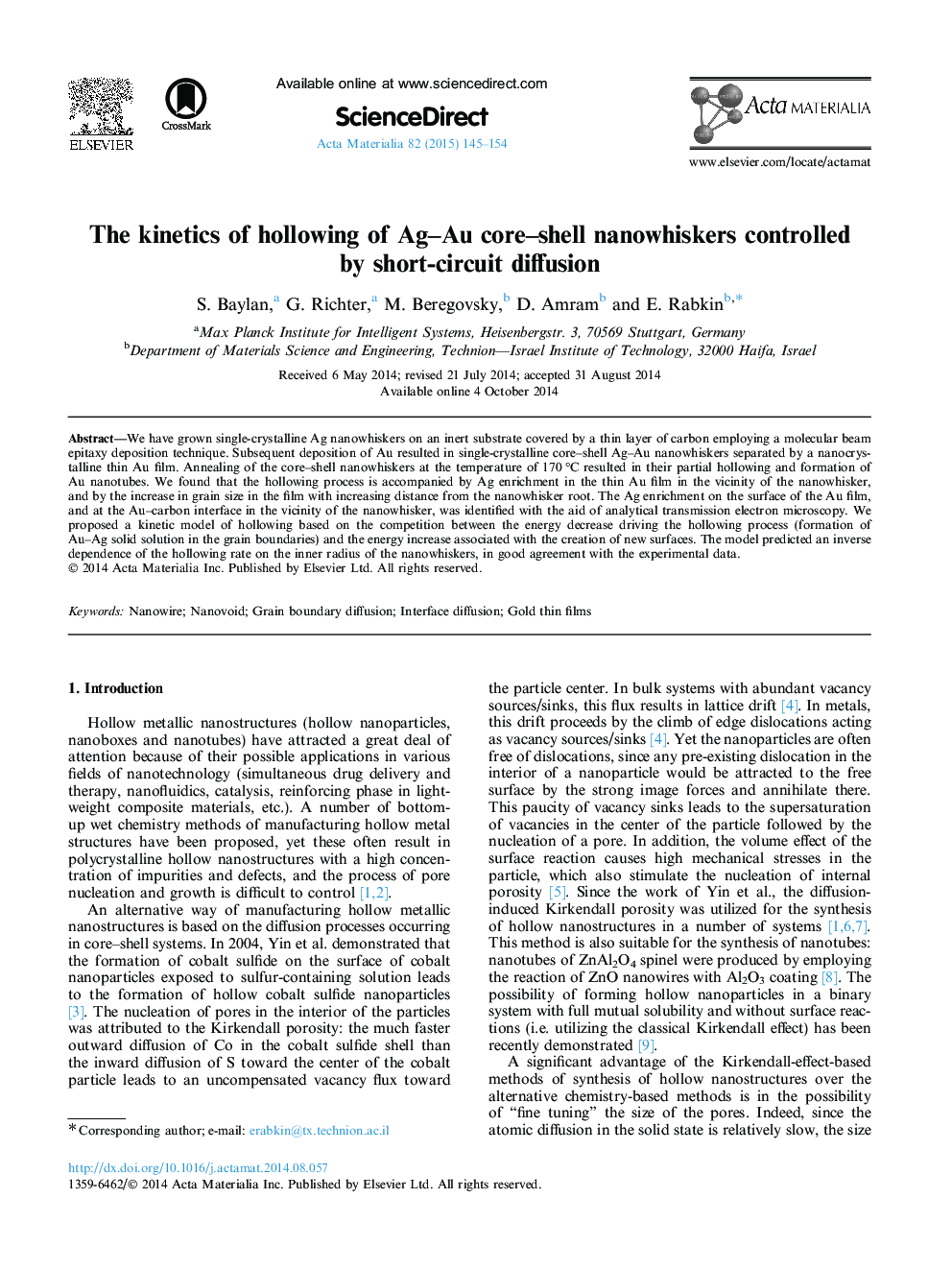| Article ID | Journal | Published Year | Pages | File Type |
|---|---|---|---|---|
| 1445510 | Acta Materialia | 2015 | 10 Pages |
We have grown single-crystalline Ag nanowhiskers on an inert substrate covered by a thin layer of carbon employing a molecular beam epitaxy deposition technique. Subsequent deposition of Au resulted in single-crystalline core–shell Ag–Au nanowhiskers separated by a nanocrystalline thin Au film. Annealing of the core–shell nanowhiskers at the temperature of 170 °C resulted in their partial hollowing and formation of Au nanotubes. We found that the hollowing process is accompanied by Ag enrichment in the thin Au film in the vicinity of the nanowhisker, and by the increase in grain size in the film with increasing distance from the nanowhisker root. The Ag enrichment on the surface of the Au film, and at the Au–carbon interface in the vicinity of the nanowhisker, was identified with the aid of analytical transmission electron microscopy. We proposed a kinetic model of hollowing based on the competition between the energy decrease driving the hollowing process (formation of Au–Ag solid solution in the grain boundaries) and the energy increase associated with the creation of new surfaces. The model predicted an inverse dependence of the hollowing rate on the inner radius of the nanowhiskers, in good agreement with the experimental data.
Graphical abstractFigure optionsDownload full-size imageDownload high-quality image (85 K)Download as PowerPoint slide
